Homemade cultivator on MTZ-80, types, DIY assembly procedure

A good harvest is obtained through constant and systematic housekeeping. To successfully achieve this goal, the correct maintenance technology is necessary, which consists not only of regular cultivation of the land, but also the use of high-quality equipment.
However, having a huge amount of equipment and all kinds of utensils does not always allow you to achieve the required result.
Any factory product costs a lot of money, so a homemade cultivator on the MTZ 80 is an excellent solution in such a situation.
Content:
- Cultivator: what is it, types, how to use it
- What materials are needed to make it yourself?
- Homemade cultivator for MTZ 80
- Device for row-spacing processing
- Cultivator on MTZ 80 with gearbox from VAZ
- Design and scope of application of a disc harrow
- Features of use and principle of operation
- Disc harrow assembly procedure
Cultivator: what is it, types, how to use it
Under this concept lies a type of agricultural machinery, the main purpose of which is soil treatment. According to the operating technology, the presented type of equipment is divided into row-crop and steam products.
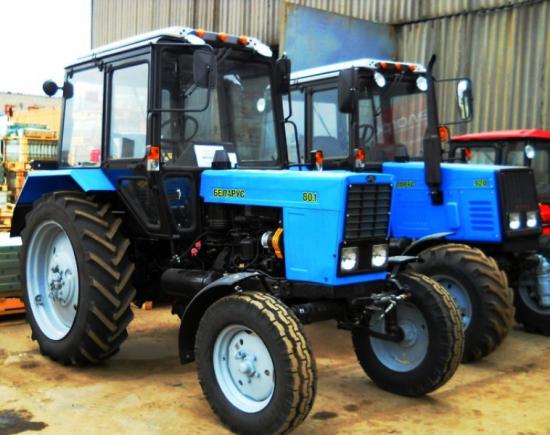
The use of the first type is relevant when cultivating the soil before sowing. The second representatives are used when cultivating the land with plants sown on it.
Cultivators are in most cases used for the following tasks:
- loosening;
- weed removal;
- moisture preservation;
- hilling.
A distinctive feature of such devices is loosening without turning over layers of earth.
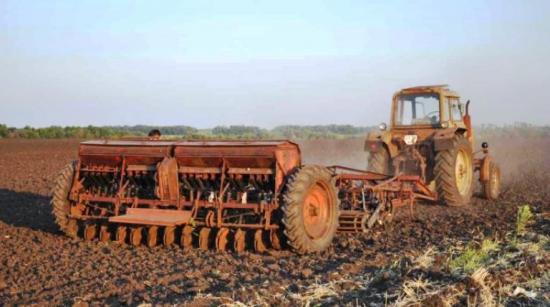
Among the many varieties of cultivating machines, there are representatives with fixed cutting elements that perform work through traction forces, as well as with active knives driven by a motor.
By type of drive system, there are manual models, motor cultivators and elements used with more complex equipment, for example, a tractor.
The following types of cultivators are currently in use:
- with working disk elements;
- with lancet structures;
- ploughshares;
- milling;
- forest with a disk type of loosening and discrete micro-increase.
Forest type cultivators
The presented type is intended for soil reclamation on forest plots brought into use after cutting down trees. Features on such soils include carrying out work in notoriously difficult conditions - the presence of stumps and cutting residues.
Such devices are installed on skidders or forwarders and are driven by the hydraulic systems of the main machine units. As noted above, subdivided into disc leaveners and models with discrete expansion, such devices are designed to process significant volumes of soil with all sorts of foreign objects.
At the same time, a distinctive feature of these varieties is that loosening in the first case is carried out by means of a harrow with an active drive, and in the second through the implementation of micro-raising.
The presented term implies a double inversion of the humus layer with a special creation of a place for planting and rapid growth of future seedlings.
Motor cultivator
This model is a power unit, the main purpose of which is to process the soil using a cutter. The distinctive features of this model in comparison with the classic walk-behind tractor include its low weight and the absence of a power take-off shaft.
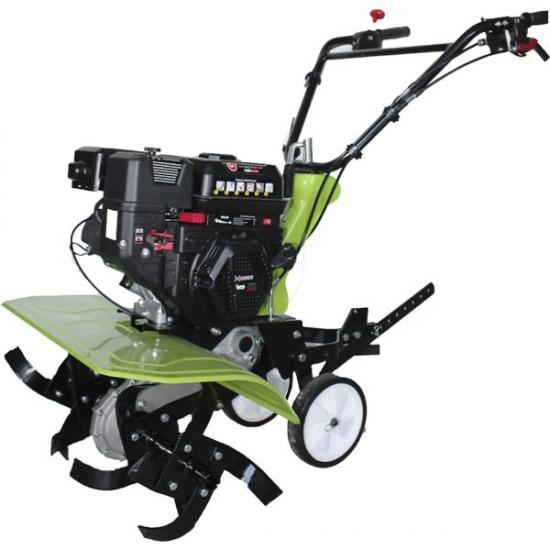
The listed advantages of a motor cultivator give the device greater mobility, which allows for a significantly smaller saving of labor resources and for processing in narrow areas.
Depending on the mechanism driving the power unit, the presented type is found in the following models:
- Gasoline with two- or four-stroke engines.
- Diesel.
- Electric with the ability to be powered from a stationary electrical network or battery.
What materials are needed to make it yourself?
As raw materials for the manufacture of such equipment, you will need to prepare metal profiles and steel sheets. It is necessary to add pipes with different sections to the presented list.
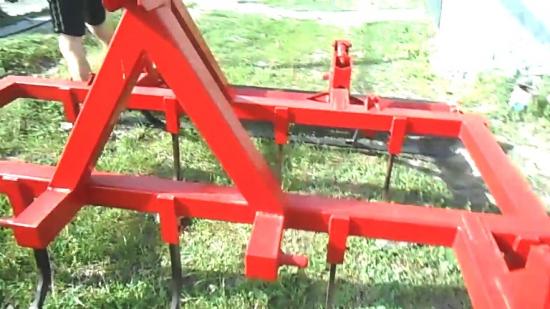
The ability to vary diameters allows you to create long handles that can easily shift the center of gravity of the equipment in the desired direction. As tools for making a cultivator, you should choose a grinder, welding and a drill with a set of metal drills.
Channels and profiled pipes allow you to create a spacious frame for placing auxiliary equipment and cutting elements.
Homemade cultivator on MTZ-80
For self-production of a cultivator for universal row crops tractors MTZ-80 requires special mounting. Otherwise, the technology for assembling the structure is no different from a banal tool for loosening the soil with the possibility of attaching it to the power unit.
The cultivator is a frame made in the shape of a rectangle from a square metal profile, with installed cutting planes.
The number of such plates in most cases ranges from 8-15 elements.

A pair of wheels and a harrow should be installed between such flat cutters for stability and regulation of the immersion depth of the structure. The last element should be fixed with chains to the edge of the supporting plane.
It is necessary to install the place for attaching the main ripper in such a way that it is possible to adjust its height and pressing force.
When installing, it is important to calculate future safety and avoid breakdowns and jamming of components.
We invite you to watch an interesting video about a DIY cultivator:
Device for row-spacing processing
The most common household equipment is the row ripper. The relevance of using such a product is due to the need to process narrow areas.
This, in turn, requires such a cultivator to be compact, simple and easy to use.

The “Hedgehog” model copes well with the cultivation of such plots.
To make such a device yourself, you must adhere to the following sequence of actions:
- Buy a cutting.
- Mount the bracket in the shape of the letter U with holes at the ends.
- Prepare the wheels and shaft.
In this case, the rotating elements can be made with your own hands. Old steel pancakes of small dimensions with welded metal pins are perfect for such products. The last parts can be made from reinforcement with a cross section of 8-10 mm. When installing such spikes, it is necessary to give them a cone shape.
Prepared cutting elements - cutters are mounted on the axis. In this case, the fixation of such a structure is carried out by means of a bolted connection through prepared eyes.
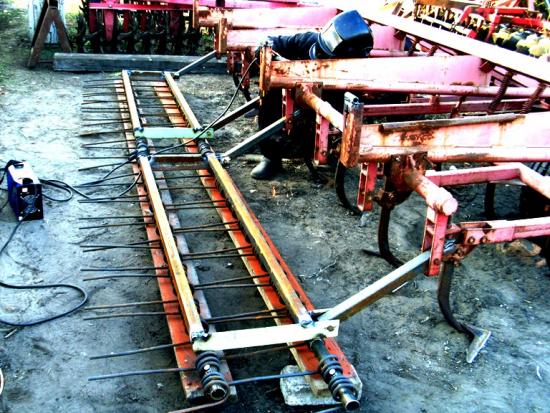
At the moment, the use of special miniature devices is a fairly common activity in suburban areas.
We invite you to watch a video about a homemade cultivator on the MTZ 80 designed for hilling:
Cultivator on MTZ 80 with gearbox from VAZ
Most people, when trying to assemble a walk-behind tractor with their own hands, are faced with the problem of choosing a reliable gearbox. Many such devices are divided into non-separable (cheaper models) and collapsible (with a high price range).
An excellent alternative to such mechanisms are analogues from VAZ. Having saved on purchasing a gearbox in this case, there is a need to recalculate the rated power and mechanical transmission of rotational motion. This circumstance is due to the characteristics of this part laid down by the manufacturer.
The positive aspects of installing such a device, despite the design difficulties, will be the final low cost of the assembled cultivator and the relatively easy assembly technology. The prevalence of VAZ spare parts and the availability of component parts on the market will make the task of possible repairs easier.
Design and scope of application of a disc harrow
The presented type of device, being an alternative to a cultivator and plow, is actively used for cultivating soils with a moisture level of no more than 25-30%. The harrow consists of steel discs specially placed at a certain angle.
With their help, the immersion of the cutting elements and the processing angle are adjusted.
Based on the type of design, such a mechanism is divided into mesh and hinged models. Mounted mechanisms are designed for regular soil cultivation to a depth of 10 to 15 cm.
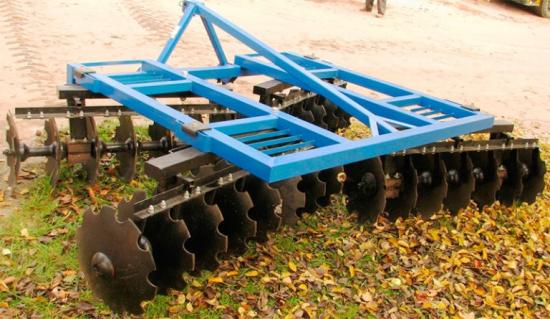
Such designs are used for:
- pre-sowing and daily cultivation of the land;
- weed elimination;
- grinding rotted residues;
- rejuvenation of plots;
- leveling and increasing the density of soil on the site.
The mesh variety is designed to solve the following problems:
- treatment of soils with crusts formed due to heavy rains or drought;
- ensuring air ventilation and oxygen saturation of the soil;
- preserving and sealing moisture while simultaneously applying mineral and organic fertilizers;
- reducing weediness in crops.
These models are suitable for plants with a stem height of no more than 25-30 cm.
Such mechanisms are made in the form of a mesh with evenly spaced metal spikes. The tooth spacing is selected depending on the intended functionality.
Based on their intended use, these devices are divided into:
- garden;
- field;
- swamp.
Garden models
Such products are lightweight and are intended for inter-row processing of small garden plots. Such harrows allow you to loosen the soil to a depth of no more than 10-12 cm.
Field structures
The use of these harrows is relevant after row-crop activities.
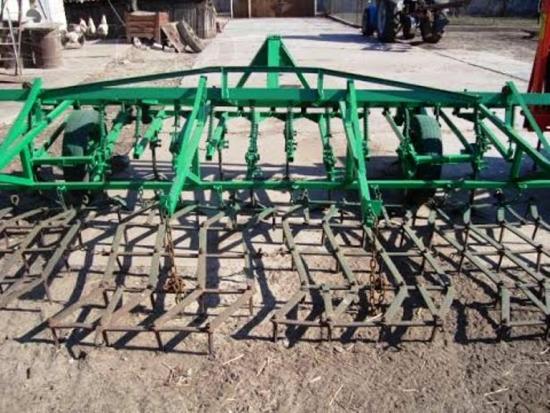
Some models are additionally equipped with ballast boxes for leveling the device. With the help of such mechanisms, it is possible to loosen the soil to a depth of no more than 15-17 cm.
Swamp representatives
Based on their name, such divisions are designed to cultivate difficult lands in swampy and forested areas. Processing is carried out to a depth of 20-25 cm.
Features of use and principle of operation
Soil cultivation is carried out by cutting disk elements with a diameter of 45 to 50 cm into the soil. Placing the bushings with discs on the same axis allows the structure to rotate, which leads to more efficient tillage.
The installation of such batteries requires maintaining the angle of penetration into the ground, called the angle of attack. This indicator should vary from 5 to 20 degrees.
The angle is selected depending on the hardness of the soil. The denser the top layer, the greater the angle of attack should be.
The operating principle of the harrow, fixed at a minimum distance from the tractor, is based on the destruction of the upper layer and lifting of the lower layers. To increase processing efficiency, it is necessary to ensure uniform removal of the front and rear discs.
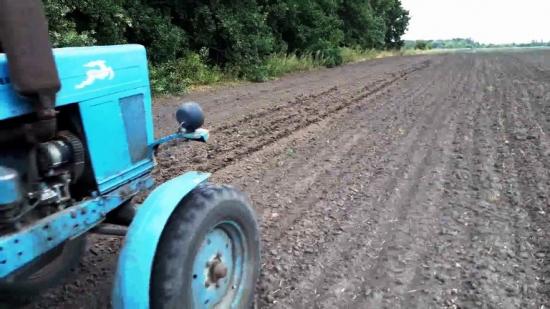
When the tractor moves along the perimeter of the cultivated area, the first line discs open the top layer of soil. The soil is lifted due to the spherical shape of each of the installed disks. Then such layers are shifted to the side and turned over.
The second battery returns the inverted earth to its original place. As a result of such actions, the required loosening is achieved to the required depth.
Disc harrow assembly procedure
Self-manufacturing of such a device significantly saves the final estimate.
To create a harrow at home, you need to be patient and prepare the following materials:
- pipe with a cross section of 50 mm;
- square frame made of U100 channel;
- a pair of old wheels;
- medium harrows in the amount of 5 pcs.;
- rubberized belt.
Based on a pre-prepared drawing and verified dimensions, a structure consisting exclusively of belts is assembled. Installation on the tractor is carried out according to the triangle rule.
During operation of the cultivator, the wheels must keep the frame strictly horizontal. Otherwise, the risk of tilting, deformation of the mechanism and its failure increases.
A properly assembled structure is practical, maneuverable and effective at loosening the soil.
Farming is a complex multi-step process. Its fertility depends on proper soil care both before and after planting.
Timely processing of plots and removal of the dried top crust during cultivation makes it possible to saturate the top layer of soil with the necessary supply of air and retain moisture.
Knowledge of the technical characteristics of the material at hand and correct assembly will not only allow you to significantly save on the stages of assembling and creating a cultivator, but will also ensure uninterrupted, efficient work on cultivating the site and obtaining a rich harvest.


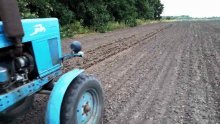
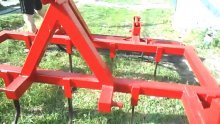

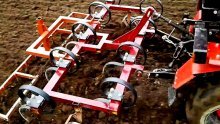
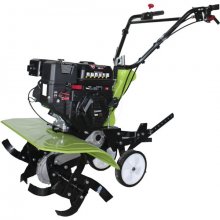
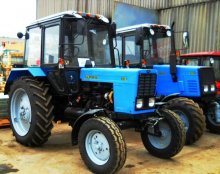
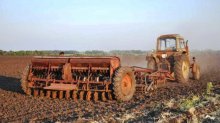
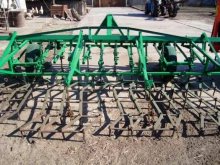
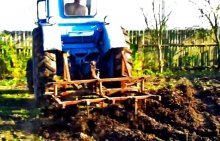
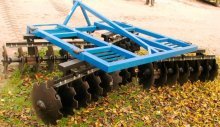
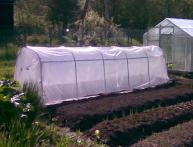
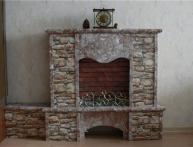
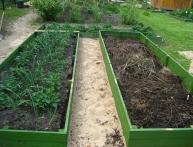
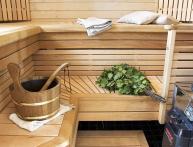
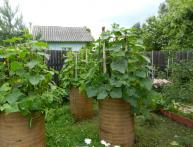
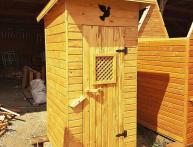
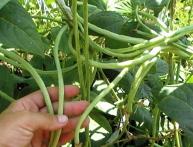

Comments
The easiest to manufacture are cultivators without rotating parts. If compared with industrial designs, the cost of a homemade cultivator design will be much cheaper.